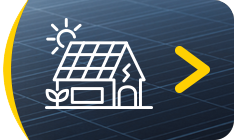- 16 Oct, 2017
- Solar Training

Facing the Chinese competition, which continues to spark debate, Europe can rely on innovation. Several projects that could make the photovoltaic sector extremely competitive in the coming years have been making headlines in specialized journals and websites for a few months. Here are the ones we have selected.
Research Projects
- INES Work
The National Institute for Solar Energy (Institut National de l'Énergie Solaire, INES) obviously has many ongoing projects aimed at reducing the production costs of solar cells and modules and improving their performance. INES is particularly working on the processes of purification and crystallization of polycrystalline silicon.
The Restore Platforms, one of which is located in Germany, are currently focusing on three possible development areas: metallic silicon cells, junction processes from amorphous cells on wafer silicon structures, and nanostructured silicon.
Moreover, other projects are underway on an innovation that is generating a lot of buzz: organic solar energy. These are organic photovoltaic cells derived from carbon and printed on plastic substrates. They lower production costs and allow for custom installations that could potentially open new markets for the sector, hence the enthusiasm they generate.
- Graphene and Molybdenite
A recent publication by MIT has unveiled new prospects for solar energy. According to the researchers behind the study, it will be possible (although the project is currently only theoretical) to produce cells from graphene and molybdenite that are extremely thin and, at equal weight, would have a conversion efficiency far exceeding all currently known technologies. However, the concrete realization of the study is not imminent; we still do not know how to exfoliate molybdenite industrially. For more information on this project, you can read the article in our press review on this subject.
Prototypes
- Spray-On Solar Panels
Based on studies on organic solar energy conducted, as we have seen, by INES but also by several other research centers, including CNRS, some practical applications have been imagined. This is the case with spray-on solar panels. Using organic cells, researchers at the University of Sheffield have developed cells that can be applied to any type of surface. Although still in the testing phase, this technology could allow for the capture of solar energy on any surface, including mobile ones like cars.
- Printable Solar Panels
This technology is not new in itself, but Australian researchers from the Viscosc (Victorian Organic Solar Cell Consortium) have developed a machine capable of printing 10 meters of cells per minute, which are flexible and adaptable. This technology will notably impact manufacturing costs.
- Graetzel Cells
The photosensitive pigment cells, known as Graetzel cells after their inventor, appeared in 1991. Their operating principle, inspired by the mechanism of photosynthesis, is based on the light sensitivity of the pigments they contain, which allows for the release of electrons. This technology, particularly efficient in diffuse light (such as at sunrise and sunset), has recently seen some advances. Indeed, their solar photon conversion efficiency has reached 15% in the laboratory, bringing them closer to the efficiency of commercial cells. A commercialization is therefore planned in the short to medium term.
New Products
- Glasswing Panels
These are panels patented by the French company SNA Solar that generate light through the integration of LEDs. Allowing for control of solar input, they also serve as sunshades and light sources. Multifunctional panels whose LEDs can be customized to match the decor.
- Chameleon Panels
We have already mentioned in our press review the Chameleon panels developed by Issol, which can take on the appearance of your tiles or facade. More than a technical revolution, these panels allow for a more aesthetic integration (which is not insignificant) into your home or building. To learn more, click here.
All rights reserved











